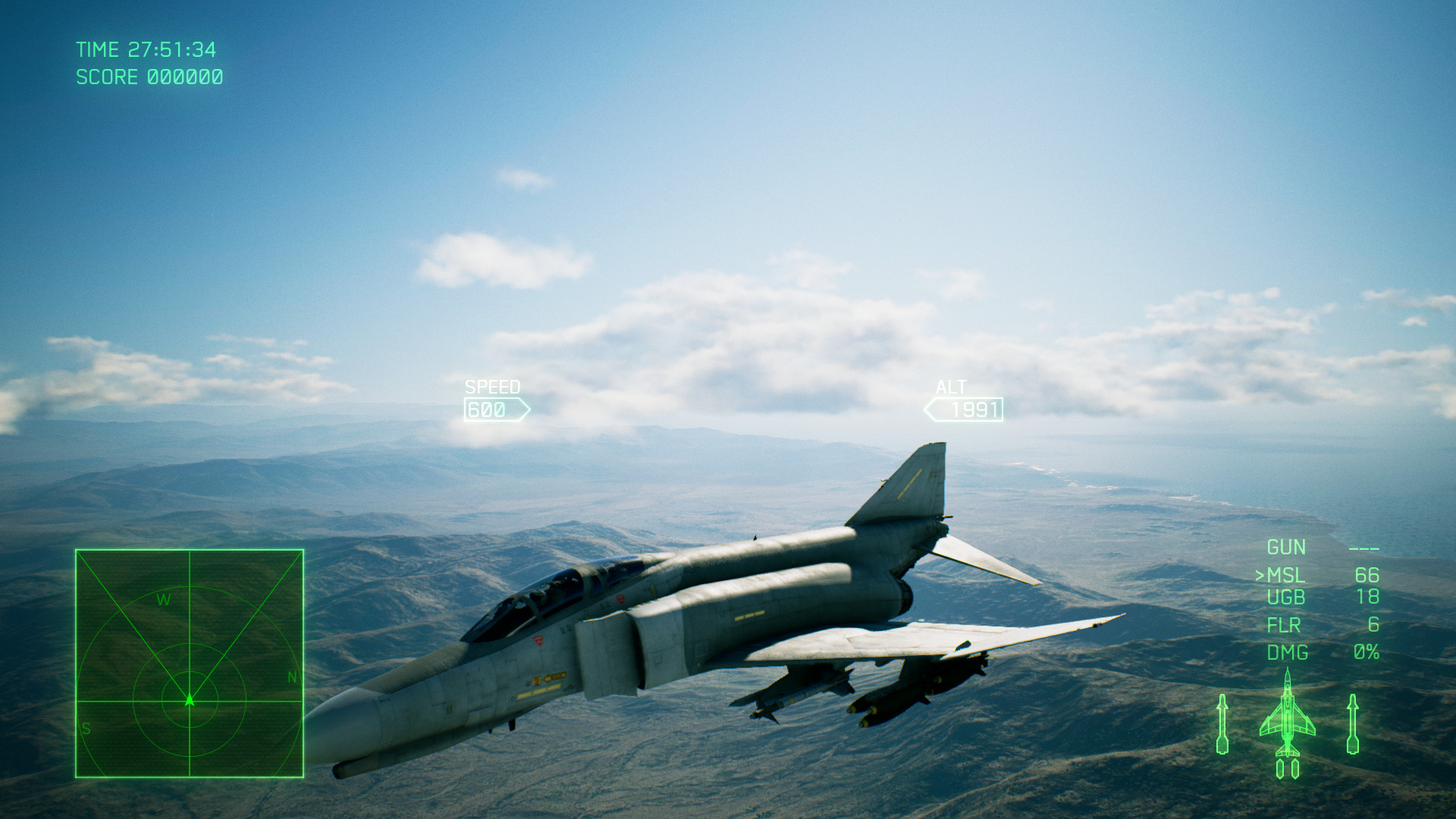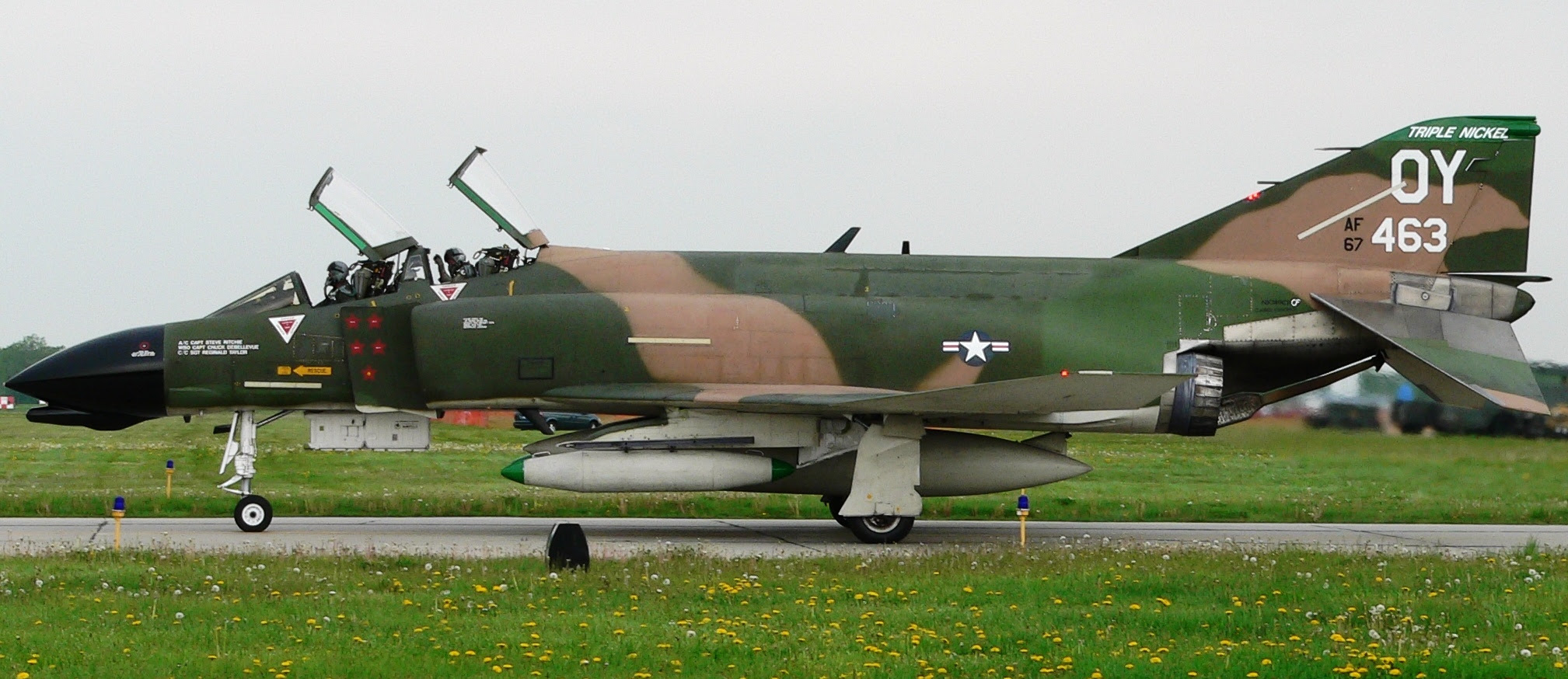F 4 Speed - Is a long-range, two-seat, twin-engine, all-weather supersonic jet interceptor and fighter-bomber originally developed by McDonnell Aircraft for the United States Navy.
Before it was adopted by the United States Marine Corps and the United States Air Force, and by the mid-1960s it had become a major part of their air weapons.
F 4 Speed

Phantom production ran from 1958 to 1981 with a total of 5,195 aircraft built, making it the most produced American supersonic military aircraft in history, and cemented its position as an iconic Cold War fighter aircraft.
Speed Hunter 32004
The Phantom is a large fighter with a top speed of over Mach 2.2. It can carry more than 18,000 pounds (8,400 kg) of weapons on nine external hardpoints, including air-to-air missiles, air-to-ground missiles, and various bombs. The F-4, like other interceptors of its time, was originally designed without an internal cannon. Later models incorporated the M61 Vulcan rotary cannon. Starting in 1959, he set 15 world records for flight performance,
The F-4 was used excessively during the Vietnam War. It served as the primary air superiority fighter for the US Air Force, Navy and Marine Corps and became important in ground attack and aerial reconnaissance roles late in the war. During the Vietnam War, a US Air Force pilot, two weapons systems officers (WSO),
A US Navy pilot and radar intercept officer (RIO) took the lead in achieving five aerial kills against fighter aircraft.
The F-4 continued to form a major part of US military air power throughout the 1970s and 1980s, gradually being replaced by more modern aircraft such as the F-15 Eagle and the F-16 Fighting Falcon Falcon in the United States Air Force, the F-4. 14 Tomcats in the United States. Navy, and the Hornet F/A-18 in the United States Navy and the United States Marine Corps.
Engineering Channel: F 4 Phantom Fighter Jet
The F-4 Phantom II was used by the United States in the reconnaissance and Weasel (Amy Air Defense) role in the 1991 Gulf War, finally leaving service in 1996.
It was also the only aircraft used by the two US air show teams: the Air Force Thunderbirds (F-4E) and the Blue Angels (F-4J).
The F-4 was also operated by the armed forces of 11 other countries. Israeli Phantoms saw extensive combat in several Arab-Israeli conflicts, while Iran used its large fleet of Phantoms, acquired before the fall of the Shah, in the Iran-Iraq War. As of 2021, 63 years after its first flight, the F-4 remains in active service with the air forces of Iran, South Korea, Greece and Turkey. The aircraft is most likely in service against the Islamic State group in the Middle East.
In 1952, McDonnell's head of Aerodynamics, Dave Lewis, was appointed by CEO Jim McDonnell to be the company's preliminary head of design.
Ford F Series Truck 2wd Np435 Manual 4 Speed Transmission With Shifter
With no new aircraft competitions on the horizon, internal studies concluded that the Navy had the greatest need for a new and different type of aircraft: an attack fighter.
In 1953, McDonnell Aircraft began work on revising its F3H Demon naval fighter, seeking expanded capabilities and improved performance. The company developed a number of projects, including a variant powered by the Wright J67 engine,
The J79 version promised a top speed of Mach 1.97. On September 19, 1953, McDonnell approached the US Navy with a proposal for the "Super Demon." Uniquely, the aircraft was to be modular, as it could be fitted with one or two seat noses for different missions, with different nose cones for radar, cameras, four 20 mm (.79 in) guns or 56 FFAR. unguided rockets as well as the nine hard points under the wings and fuselage. The Army was interested enough to order a full-scale sketch of the F3H-G/H, but felt that the upcoming Grumman XF9F-9 and Vought XF8U-1 already met the need for a supersonic fighter.
McDonnell's design was therefore redesigned to be an all-weather bomber with 11 external hardpoints for weapons and on 18 October 1954, the company received a letter of intt for two YAH-1 prototypes. On May 26, 1955, four Navy officers arrived at McDonnell's offices and, within an hour, presented the company with an exhausting new set of demands. Because the Army already had the Douglas A-4 Skyhawk for ground attack and the F-8 Crusader for dogfighting, the project now had to fulfill the need for an all-season fleet defense interceptor. A second crew was added to operate the powerful radar;
F 4 Phantom
The XF4H-1 was designed to carry four semi-firing missiles guided by the AAM-N-6 Sparrow III radar, and to be powered by two J79-GE-8 engines. As in the McDonnell F-101 Voodoo, the engines sit low in the fuselage to maximize internal fuel capacity and air intake through fixed geometry inlets. The thin section wing had a 45° sweep and was fitted with blown flaps for better low speed handling.
To avoid redesigning the aircraft's titanium ctral section, McDonnell's engineers tilted the outer parts of the wings by only 12 °, which is equal to the 5 ° required by the tire span. The wings also received the distinctive "dogtooth" for better control at high angles of attack. The floating tailplane was given 23° of anhedral to improve control at high angles of attack, while keeping the tailplane clear of the engine exhaust pipe.
In addition, the air intakes had a fixed ramp and a variable geometry ramp with a programmed angle to recover maximum pressure between Mach 1.4 and Mach 2.2. The matching air flow between the intake and the gin was achieved by bypassing the gin as secondary air in the exhaust mouth. All season intercept capability was achieved with the AN/APQ-50 radar. To meet the requirements for carrier operations, the landing gear was designed to support landing at a maximum speed of 23 ft/s (7 m/s), while the nose run could be extended by 20 in (51 cm) to increase the angle of attack . on the catapult part of takeoff.
On July 25, 1955, the Navy ordered two XF4H-1 test aircraft and five pre-production YF4H-1 examples. The Phantom took its first flight on May 27, 1958 with Robert C. Little at the controls. A hydraulic problem prevented the landing gear from retracting, but subsequent flights went smoother. Early testing led to a redesign of the air intakes, including the notable addition of 12,500 holes to "drain" the slow-moving boundary layer air from the surface of each intake ramp. The series production aircraft also featured splitter plates to divert the boundary layer away from the engine inlet. The aircraft was soon competing with the XF8U-3 Crusader III. Due to the cockpit workload, the Navy wanted a two-seater aircraft and on 17 December 1958 the F4H was announced as the winner. Delays with the J79-GE-8 engines meant that the first production aircraft were fitted with J79-GE-2 and -2A engines, each with 16,100 lbf (71.8 kN) of afterburner thrust . In 1959, the Phantom began carrier suitability trials with the first complete launch-recovery cycle performed on February 15, 1960 by Indepdce.
Mcdonnell Douglas F 4b Phantom Ii (stock)
In d, the aircraft was given the less controversial name "Phantom II", the first "Phantom" being another McDonnell jet fighter, the Phantom FH-1. The Phantom II was briefly given the designation F-110A and called "Spectre" by the USAF, but these were not officially used.
At the start of production, the radar was upgraded to a Westinghouse AN/APQ-72, AN/APG-50 with a larger radar antenna, which required the bulkier nose, and the canopy was reshaped to improve visibility and make the rear cockpit . less claustrophobic.
The USN operated the F4H-1 (redesignated F-4A in 1962) with J79-GE-2 and -2A engines of 16, 100 lbf (71.62 kN) and received -8 later construction genes. A total of 45 F-4As were built; no one has seen combat, and most of the test or training aircraft.
The USN and USMC received the first definitive Phantom, the F-4B which was equipped with a Westinghouse APQ-72 radar (impulse only), a Texas Instruments AAA-4 infrared search pod and an under-the-nose track, AN/AJB-3 . bombing system and powered by J79-GE-8, -8A and -8B engines of 10,900 lbf (48.5 kN) dry and 16,950 lbf (75.4 kN) afterburner (heat) with first flight on 25 March 1961 .64 F-4Bs were built with deliveries beginning in 1961 and Pacemakers VF-121 receiving the first examples at NAS Miramar.
Sanctuaries And Bombing Halts > National Museum Of The United States Air Force™ > Display
The USAF received Phantoms as a result of Secretary of Defense Robert McNamara's effort to create a unified fighter for all branches of the American military. After the F-4B won the "Operation Highspeed" campaign against the Convair F-106 Delta Dart, the USAF borrowed two naval F-4Bs, temporarily designating them as the F-110A in January 1962, and developed the requirements for himself. version. In contrast to the US Navy's emphasis on air-to-air interception in the Fleet Air Defse (FAD) mission, the USAF emphasized the air-to-air and air-to-ground fighter-bomber role. With the merger of the McNamara designations on September 18, 1962, the Phantom became the F-4 with the naval version designated the F-4B and the USAF F-4C. The first Air Force Phantom flew on May 27, 1963, surpassing Mach 2 on its first flight.
The F-4J has improved air and ground attack capability; delivery began in 1966 and ended in 1972 with 522 built.
It had J79-GE-10 engines with 17,844 lbf (79,374 kN), a Westinghouse AN/AWG-10 Fire Control System (making the F-4J the first fighter in

F-35 top speed, f speed cobra, f type top speed, jaguar f pace speed, f 150 top speed, f 35 maximum speed, cobra f speed drivers, speed of f 35, f 111 top speed, f 35 max speed, speed rating f, jaguar f type speed

0 Comments